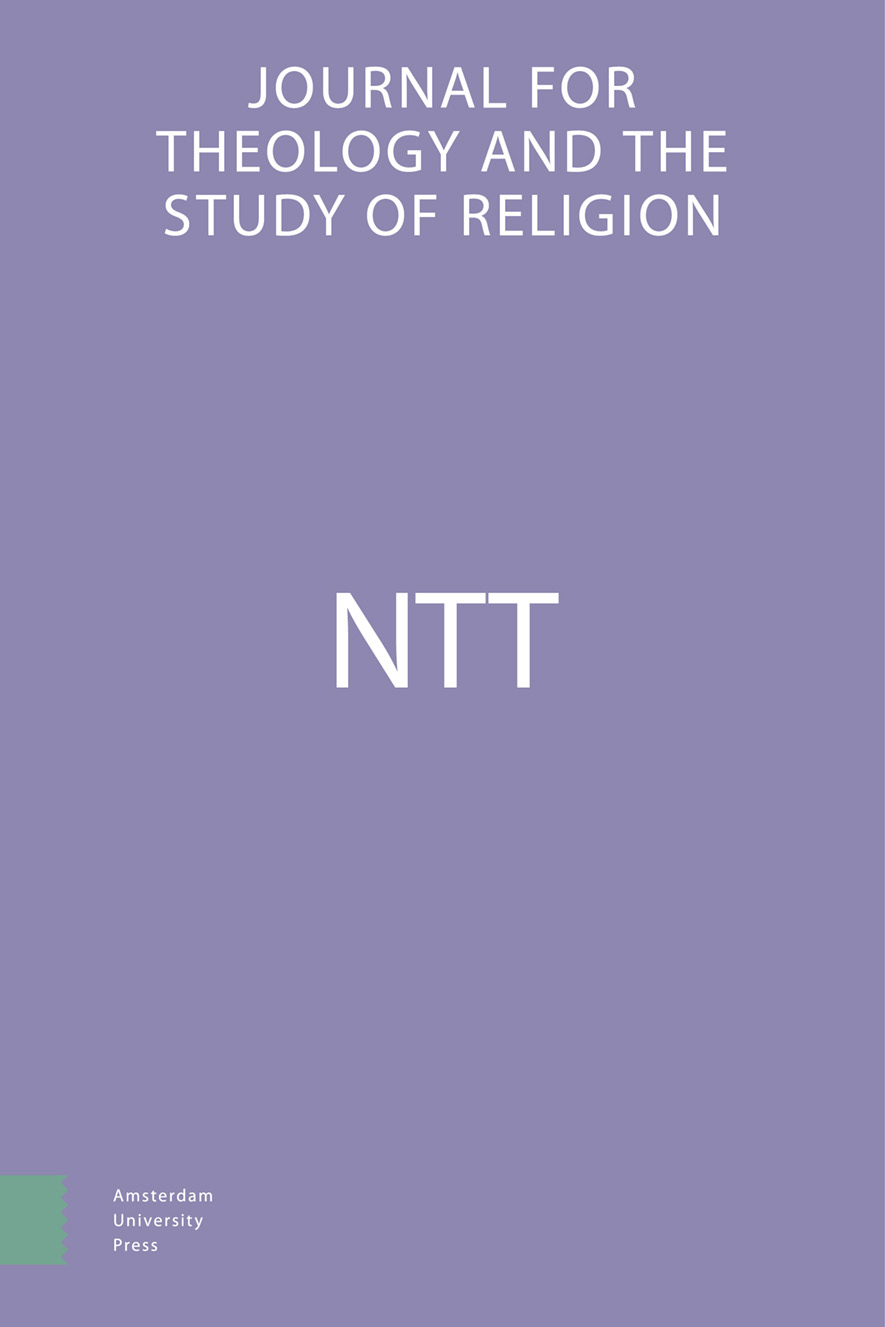- Home
- A-Z Publications
- NTT Journal for Theology and the Study of Religion
- Previous Issues
- Volume 52, Issue 2, 1998
NTT Journal for Theology and the Study of Religion - Volume 52, Issue 2, 1998
Volume 52, Issue 2, 1998
-
-
Over de structuur van oudtestamentische verhalen en de indeling in petucha’s en setuma’s
More LessAbstract In this contribution I compare two ways of structuring Old Testament stories: a structuralistic one that is founded on changes of place, time, action and persons, and the division of MT into open and closed paragraphs (petuhot and setumot). Two parts of 2 Chronicles are investigated: the reign of Ahaziah (II Chr. 22:1-9/12) and the celebration of the passover and the death of Josiah (II Chr. 35:1-24). It appe Read More
-
-
-
The Origins of Society in the Creation Myths of Genesis
More LessAn Anthropological Perspective1Preliminary versions of this paper were presented at a philosophical seminar in Münster, September 26, 1995, and a theological Ph.D. seminar in the Hague, March 29, 1996. I started the study of the creation myths in the mid-seventies in collaboration with my friend and colleague David Moyer (D.S. Moyer & J.G. Oosten, ‘The Ambivalent Gardener: The animal and vegetable codes of Gen. 2.4 to 9.29’, Bijdragen KITLV 135.1 (1979), 118-127; and J.G. Oosten & D.S. Moyer, ‘De mythische omkering: Een analyse van de sociale code van de scheppingsmythen van Genesis 1.4b-ll’, Antropologische Verkenningen 1.1 (1982), 75-91. I wish to thank Jos Platenkamp and Karel van der Toom for their invitations to present the paper at these seminars and their valuable and stimulating comments.
Abstract The narratives of Genesis 1-11 are examined from an anthropological perspective focusing on the origin and development of human society. The actions of ancestors give rise to cultural institutions which deny or inverse those actions. A social world requires the existence of cultural rules and ancestors who precede it. The world is created and recreated so that society can take shape. The development of soci Read More
-
-
-
Het Achttiengebed in het Grieks?
More LessAbstract Papyrus Egerton 5 was published in 1935 as being a leaf from a Christian liturgical codex (ca. 400 AD). Subsequently two Jewish scholars tried to demonstrate that the Greek prayer text on that leaf was a short(ened) form of the Jewish Amidah (or Shemoneh Esreh = Eighteen [Benedictions]). In the past 55 years this text has fallen victim to complete oblivion. This article reopens the debate, summarizes the res Read More
-
-
-
Boeddhistische aanknopingspunten voor een beroep op mensenrechten
More LessAbstract This article tries to answer the question as to what extent buddhism can appreciate and embark on an ethical appeal to ‘human rights’. First of all, it represents the relevant part of an interview with the Dalai Lama on the issue, and takes his conviction as the thread of the article. The article goes on to ask whether buddhism can consider the social order a religious ideal. It then discusses some crucial buddhist concepti Read More
-
Volumes & issues
-
Volume 79 (2025)
-
Volume 78 (2024)
-
Volume 77 (2023)
-
Volume 76 (2022)
-
Volume 75 (2021)
-
Volume 74 (2020)
-
Volume 73 (2019)
-
Volume 72 (2018)
-
Volume 71 (2017)
-
Volume 70 (2016)
-
Volume 69 (2015)
-
Volume 68 (2014)
-
Volume 67 (2013)
-
Volume 66 (2012)
-
Volume 65 (2011)
-
Volume 64 (2010)
-
Volume 63 (2009)
-
Volume 62 (2008)
-
Volume 61 (2007)
-
Volume 60 (2006)
-
Volume 59 (2005)
-
Volume 58 (2004)
-
Volume 57 (2003)
-
Volume 56 (2002)
-
Volume 55 (2001)
-
Volume 54 (2000)
-
Volume 53 (1999)
-
Volume 52 (1998)
-
Volume 51 (1997)
-
Volume 50 (1996)
-
Volume 49 (1995)
-
Volume 48 (1994)
-
Volume 47 (1993)
-
Volume 46 (1992)
-
Volume 45 (1991)
-
Volume 44 (1990)
-
Volume 43 (1989)
-
Volume 42 (1988)
-
Volume 41 (1987)
-
Volume 40 (1986)
-
Volume 39 (1985)
-
Volume 38 (1984)
-
Volume 37 (1983)
-
Volume 36 (1982)
-
Volume 35 (1981)
-
Volume 34 (1980)
Most Read This Month


